Dance
Dazzling dance doc celebrates the legacy of an AIDS-era masterpiece
It was also a period when AIDS was ravaging the dance community, decimating the ranks of companies- casting its dark shadow
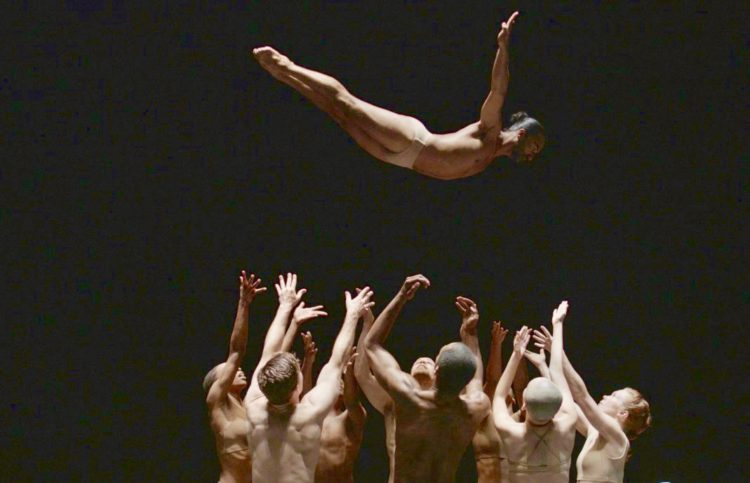
NEW YORK – Once upon a time in New York City, Bill and Arnie formed a dance company.
They had met each other in 1971, falling in love at first sight across a crowded room at SUNY, and spent the next decade exploring their lives and their art together. Arnie was a photographer, at first, but his fascination with the human body and its movement – stoked by his collaborations with Bill, a dancer who was his muse and favorite photographic subject – soon led him to become a dancer himself.
Together they found acclaim as a team, creating their own works as part of the American Dance Asylum during a rise which culminated in the birth of the Bill T. Jones/Arnie Zane Company in 1982. What followed was a brilliant and prolific period in which the two partners were among the most celebrated dance artists in the New York scene.
It was also a period when AIDS was ravaging the dance community, decimating the ranks of companies all over the city and casting its dark shadow over much of the work being produced at the time. Bill and Arnie, charmed as their lives had been, could not escape that shadow, and Arnie Zane died of AIDS-related lymphoma, at the age of 39, in 1988.
That bittersweet true-life love story would make for a profoundly moving documentary on its own strength alone, but the film delivered by co-directors Rosalynde LeBlanc and Tom Hurwitz has its sights on something bigger than that. “Can You Bring It: Bill T. Jones and D-Man in the Waters” is the story of what happened after Zane’s untimely passing, and it illuminates the way that art provides a channel for the personal to become universal and give expression to the shared trauma of an entire community.
The new documentary, which debuted at the DOC NYC film festival and opens in select theaters and virtual cinemas nationwide on July 16, is not about Bill and Arnie, nor even about Bill himself – though his name is in the title and he appears extensively onscreen, both in contemporary and archival footage – but about the seminal ballet which came in the wake of Arnie’s passing. “D-Man in the Waters” was mounted in 1989 by Jones and the company he and Zane had started, shaped by a creative process through which both he and his dancers found expression for the myriad emotions spawned by their loss.
Set to Felix Mendelssohn’s soaring Octet for Strings, the piece captures the infectious energy, innocence and will to survive of a beleaguered generation, propelled by the non-stop momentum of dancers hurling across the stage in a whirlwind of leaps, rolls, and slides. Though it gives full weight to the inevitable sorrow at its core, it nevertheless maintains an attitude of defiant celebration, embodying strength and resilience over loss, and is widely acknowledged today as one of the most significant works of art to come out of the AIDS.
“Can You Bring It” utilizes extensive interviews and archival footage to chronicle the history of the original “D-Man” – the title referring to the nickname for Demian Acquavella, a beloved company member who struggled against the virus during its creation before himself dying in 1990 – while also following a contemporary remount of the production by students at Loyola Marymount University.
Those students are led by none other than the film’s co-director, Rosalynde LeBlanc (herself a former member of the Jones/Zane Company and a leading figure in maintaining Jones’ legacy and pedagogy), and a large portion of the modern footage is centered around LeBlanc and Jones himself working with these young pre-professional dancers – most of them likely not even born when the AIDS crisis was raging – to help them find the personal connection required to unlock the power of the choreography.
Through the juxtaposition of the two creative efforts, original and modern, the movie provides a thoughtful – and unexpectedly gripping – exploration of the process by which art can be adapted to the needs of a different era without losing the essence at its core.
From an intellectual or aesthetic perspective, it’s a rich and nuanced close-up look at the hard work – as much of it mental and emotional as physical – that is the art of dance. What makes “Can You Bring It” profound enough to be an extension of the very piece it documents, however, is the wider lens that allows us to the piece in the context of both periods at once.
In 1989, Jones’ tour de force ballet gave physical manifestation to the fear, anger, grief, and hope for salvation that an emerging dance company felt as they were embattled by the AIDS epidemic – but for the group of young dancers tasked with re-interpreting the work three decades later, that experience is something from a history book.
To commit to the piece and perform it successfully, they must deepen their understanding of its power – and that means exploring what is at stake in their own personal lives during a troubling time that presents a whole new set of challenges, struggles, and heartbreaks. Needless to say, it’s work not cut out for the faint of heart.
Of course, as any fan of dance documentaries can tell you, the real thrill of such films is the opportunity to see the beauty of bodies in motion, captured up-close on camera and overpowering all other concerns through the transcendent urgency of its perfection. “Can You Bring It” does not disappoint on this level, either.
That should be no surprise. Bill T. Jones, after all, has continued throughout the decades, as has the company he founded with Arnie which still bears both of their names. He’s gone on to win Tony Awards (for choreographing “Spring Awakening” and “Fela!”), become a Kennedy Center Honoree, and be awarded a MacArthur Grant, over a long career in which he has choreographed over 120 works, and the dancing we see onscreen all bears the pedigree of having been shaped, either directly or indirectly, by his influence.
Add to that the presence of one co-director (LeBlanc) who has been intertwined with his work through most of her own career, and another (Hurwitz) who is one of the most honored documentary cinematographers working today, and you couldn’t ask for a better team to put together a great dance documentary.
Yet what makes a dance documentary truly great is its resonance within a larger world. Dance – and indeed, film, or any other form of art – is at its best when it serves to explore the experience of life itself, through all its levels and nuances. “Can You Bring It” does just that, offering up a lyrical and detailed portrait of artists and their work that is also rich in wisdom, compassion, empathy, diversity, and historical perspective – a testament to the power of art and the triumph of the human spirit.
In a world where the concept of community is often used more to divide us than to unite us, such ideas are a balm for the soul.
Dance
Dance performance benefits LGBTQ+ seniors
“Abbale” performs March 30, 31, & April 1, 8pm, at the Broadwater Main Stage in LA- For tickets & further info visit the Broadwater’s website
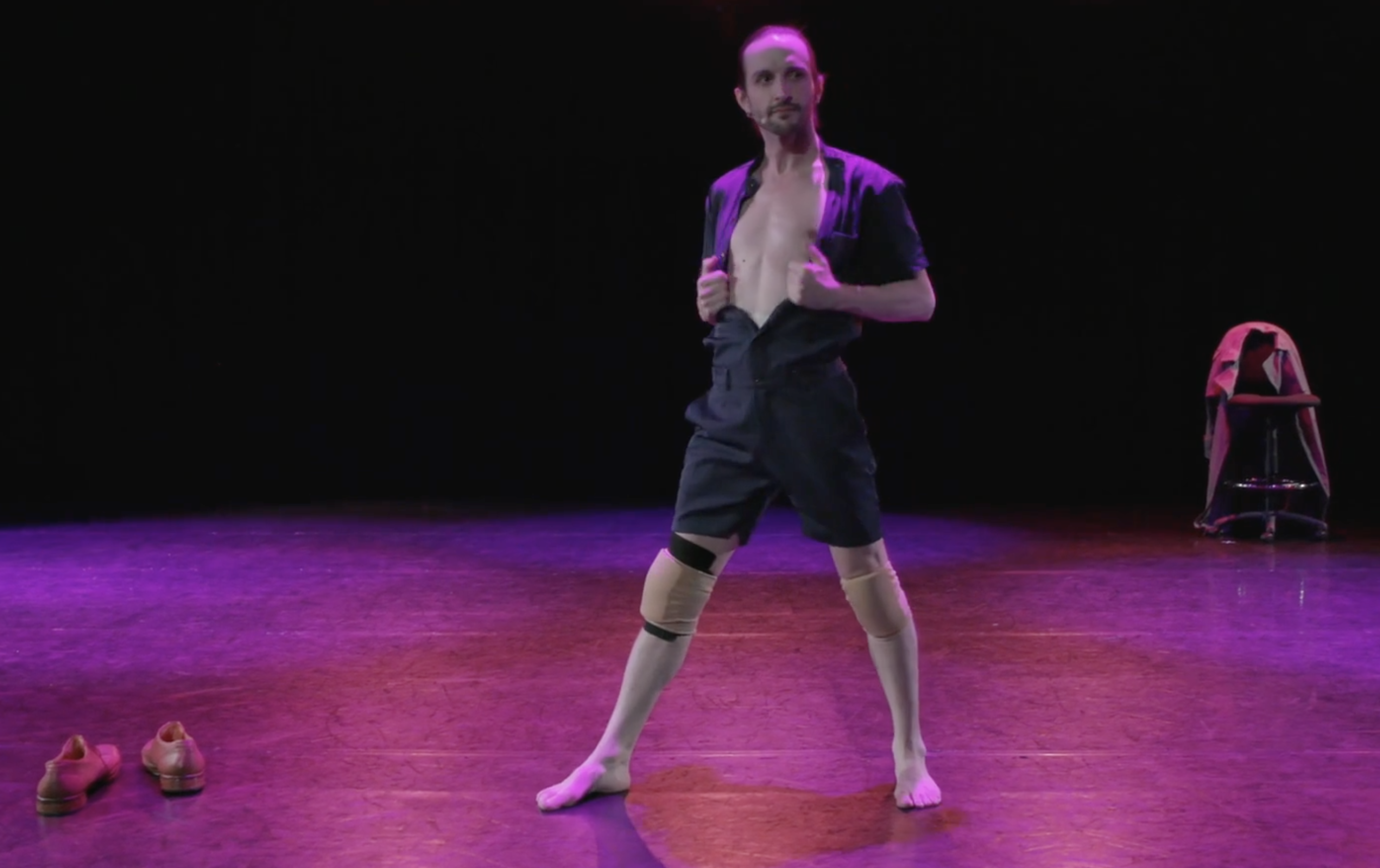
LOS ANGELES – There’s always been an endless debate around the value of art to society at large. For some people, it’s a mere distraction from the struggles of everyday life; for others, it’s an enrichment.
That debate is not likely to end soon – any more than the debate over what IS art in the first place – but what happens when art and activism come together to make a tangible, quantifiable impact on the life of a community in need? Does it sway the balance enough to prove that art is more than just a trivial pursuit, but a fundamental element of human expression with the power to change our existence for the better?
That’s a pretty heady question, but when the art has as direct and uncomplicated a purpose as “Abbale” – a dance performance piece from LA’s Bodies in Play set to enjoy its premiere run at the Broadwater Main Stage March 30 through April 1 – it’s difficult to answer with anything other than an unequivocal “yes.”
Written, choreographed and performed by Andrew Pearson (founder and facilitator of Bodies in Play, an LA-based dance collective dedicated to producing works which “further the narrative through dance and movement” and invite a “challenge to conformity… through a lens just queer of center”), “Abbale” is a dance-theater memoir which weaves together the true stories of 3 fatherly relationships, spanning 3 decades and 3 different cultures, as one man tries to understand just what it means to fill “Daddy’s” shoes. Though the Broadwater run is its “official” premiere, it was previously presented in a workshop production which garnered rave reviews from commentators like Dana Martin of “Stage Raw” (who called it “compelling,” “provocative”, and “candid”) and Odyssey Theater Curator of Dance Barbara Mueller-Wittmann (who described it as “a tour de force”).
While it’s the debut of a new work from one of Los Angeles’ most acclaimed dance organizations, it’s also more than that: the premiere run of “Abbale” – a Hebrew word meaning “daddy” – will also serve as a food drive for the Los Angeles LGBT Center’s Pride Pantry, which provides food staples for older community members in need. With 24% of LGBTQ+ seniors struggling to meet their food requirements each month, needless to day it’s a service that’s vital to the health and welfare of LA’s queer elders.
According to Pearson, the alliance between his newest performance piece and the Pride Pantry cause arose naturally from the content of the work itself.
“There are a lot of gay themes in the show,” he told the Blade, regarding its alignment with the Center’s mission. “One recurring theme is about food and/or feeding – food becomes a metaphor for an expression of love, specifically to one of the characters’ fathers – and I always wanted it to have some kind of a connection beyond the performance, some kind of connection beyond the stage. So, I was researching different organizations that had a similar ethos, or a connection to the some of these themes, and when I saw that the Pride Pantry was looking for food to provide for gay seniors, gay elders, it checked off so many different boxes that the show represents, so I just reached out to them and asked if they’d be interested in our show doubling as a food drive for them.”
As for “Abbale” itself, Pearson – a six-year veteran of the LA Contemporary Dance Company with an impressive list of career credits and accolades who serves on the faculty of the American Musical and Dramatic Academy – explains that it began with a series of ideas that arose from ruminations about the relationships he and his then-partner each had with their respective fathers, which opened up into a much larger conceptual scope that encompassed “all the iterations that a ‘daddy’ comes in.”
It turned out to be a bigger chunk than he could chew on his own, so he reached out to longtime frequent collaborator Lisa Owaki Bierman – an NYU-educated theater artist whose work has been performed across Los Angeles, from Bob Baker’s Marionette Theater to the Carousel at the Santa Monica Pier – for help.
“I came in with this very broad first draft which had way too much in it,” he says, “and she astutely said to me, ‘I think the personal relationships you’ve developed in this script are really fruitful and if we develop those further, then all these other themes you’re aiming to highlight will naturally come through.”
Their collaboration resulted in the initial showcase production, which took place in February 2020. Encouraged by the positive feedback and armed with observations about what worked and what didn’t, the pair geared up to build on the foundation they had created and expand the polish the piece into its finished form.
“Two weeks later, we were in lockdown,” Pearson says.
The pandemic-induced setback turned out, in many ways, to be a blessing in disguise.
“It was almost a saving grace for me creatively, because I couldn’t be choreographing in the studio, like I normally would be, so I got to develop and hone my writing practice, and I had Lisa to hold my hand the whole time as I was discovering my authorship, and my voice.”
Bierman also found it unexpectedly beneficial, thanks to an ill-timed additional circumstance in her personal life. As she told the Blade, “Not only were we in lockdown, but I had a baby. It was sort of a wild way to create a theater piece. Being in a pandemic, with absolutely no help with child care, or any of that stuff, it helped that Andrew was such a workhorse – the bulk of the labor, the writing and the generative stuff, was on his shoulders, and I could just go through the script at my own pace and then jump on Zoom to touch base with him.
“And it was helpful for me to have this to work on, because – especially in early parenthood – it’s easy to feel defined by that role, but to have a way to carve out space to be creative, during a time when nothing else would have been possible, I was so grateful that we had each other, and that we had this piece to be putting our attention on at that time.”
Now, the pair – along with Producer and Story Consultant Ben Jehoshua – are gearing up to put the end result of their collaboration onstage at the Broadwater in a partnership that makes it an especially important event – potentially even a life-changing one for LGBTQ+ seniors who rely on the LA LGBT Center for help with their basic food needs.
As Pearson explains, “Pretty early on in it we define a ‘daddy’ as a ‘giver’. That was the angle I was interested in, how this show could also be a catalyst for giving.”
Of course, the show won’t be over after its premiere run has ended – as its co-creator and solo performer happily tells us, “It will be touring up to San Francisco in June, so this is our kick-off for what hopes to be a life for this show.”
“Abbale” performs March 30, 31, and April 1, 8pm, at the Broadwater Main Stage in Los Angeles:
For tickets and further information, visit the Broadwater’s website.
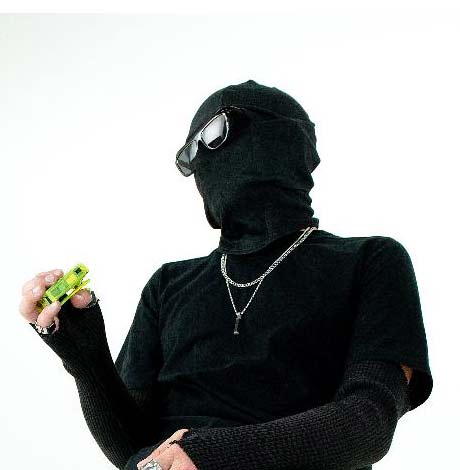

DVRKO. (Photo by Kavan The Kid)
The remix album for “This Is How,” the debut single from the mysterious artist known as DVRKO featuring Sarah De Warren, is out now. After an initial launch shrouded in secrecy, the Main Mix of “This Is How” has been streamed on Spotify over 350,000 times within two weeks of its release last month; the single was also quickly added to the popular ‘Friday Cratediggers’ Spotify playlist.
The combined Spotify monthly listeners of “This Is How” remixers has clocked in at over 2.4 million.
At radio, the Gozzi Radio Edit and Gozzi Remix of the song is already airing on “The Remix Top30 Countdown” (iHeartRadio) nationally syndicated mixshow, “Club985” mixshow on KLUC-FM Radio Las Vegas (Entercom), and Dash Radio’s ElectroCity. Other remixes from Jayceeoh and Tony Arzadon are now available in the remix album and are making waves in a variety of national radio markets from Miami to Seattle with more radio stations being added each week.
Having been profiled in early interviews published in Billboard and DJ Times – with more editorial coverage and interviews to come in the weeks ahead – and following a fun-filled Memorial Day takeover of EDM.COM’s Instagram account where DVRKO played all remixes of “This Is How,” the full remix album is now available.
Remixes of DVRKO x Sarah De Warren’s “This Is How” include works by: ATLAST, BIJOU, Dark Intensity, dialedIN, Freshcobar, Gozzi, JAYCEEOH, Sak Noel, Sam Silver and Tony Arzadon.
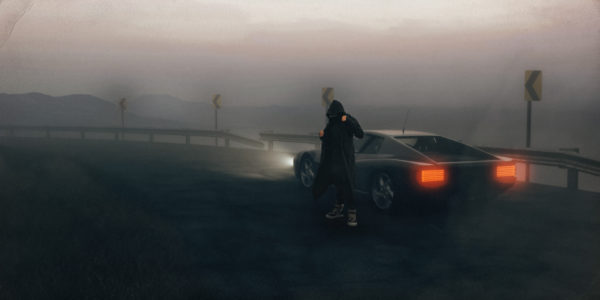
DVRKO. (Photo by Kavan The Kid)
Los Angeles Blade talked to the artist about his career:
Los Angeles Blade: Who is DVRKO?
Who? The traps don’t work. Yeah we still have that owl problem at the studio. DVKRO however a mask and a man panhandling top lines down by the docks. A backstory, love, tragedy, music. Worlds together in a future where it’s needed more. Sound and compression, maybe a production chain with a Talkboy in it for no reason. Ask Macaulay. Inclusive and passionate, ethnicity, sexual orientation or identity, want everyone to move with what I can make. It’s EDM, it’s dance, be ready. I will bring pancakes.
Los Angeles Blade: Can you please tell us about your music, specifically “This Is How” and your upcoming song, “Lights Up”? What went into writing those two songs?
This is How. A story of tattered hope, love, laser dragons maybe, and how it all gets shredded together and fuses. Enough of it and it’s the only thing we return to, it might have been the weapon, but it’s the cure.
Lights Up. A world polarized so many times. It’s 2020. A bell tolled. The first taught us how vulnerable the world was. Another bell tolled and brought to those deaf to the world more cause that needed reform. The world needs hope, and it’s time. Lights Up is a story of redemption. Swab your ears with it.
Los Angeles Blade: What’s next, for DVRKO?
Growth, more music, more of the story. More of who I am. Most importantly so much more music. Never a set format, never stale. Some releases only on laserdisc. It would upend itself if not beautiful but it is. Be ready.
Los Angeles Blade: Give your thoughts on the news about Black Lives Matters, trans and gay rights advances in the news.
DVKRO. Neon waterfalls of pulsing bass. A future from the past and a story. It’s EDM and it’s DVKRO. Inclusive entirely, bring ears of every kind and swab them with my iterations of sound until you move. Repeat and be part of the resistance. The world realized it was weak in the tone of a bell heard globally. Another bell tolled and brought tone to ears deaf. Music for movement, equality inherent, join me in the journey.
SONANCE. The movement is for the unit of humanity, it’s what music should do. Gender, ethnicity, identity of any sort, a point of embrace. Definitely a laser dragon at some point. Deep pulsing movement that shakes your soul, remit cognition and feel the connect.
FUEL. A light flame burns in the distance, seeking fuel, hoping the world will find it. The world is ready. Fuel me up. Bring your tokens. I will poorly make egg salad sandwiches.
HOPE. As the world departs a monochrome desert, color it will find painted in aural beauty. Let’s all break the dial off before the world tries to change the station again. Bring two chairs, I like to put my feet up.
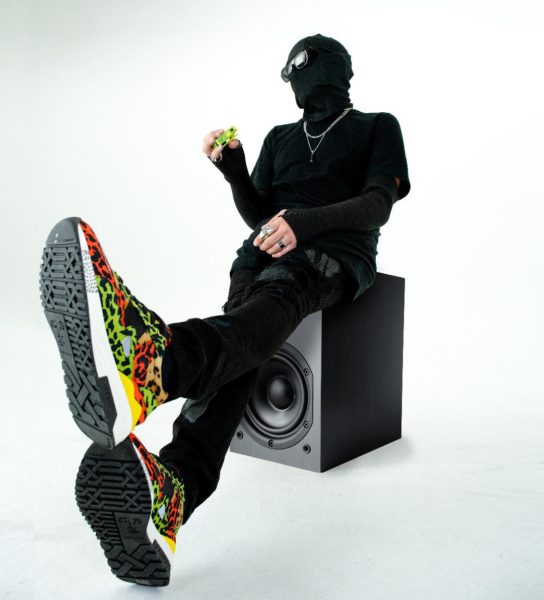
DVRKO. (Photo by Kavan The Kid)
Arts & Entertainment
REDCAT announces schedule for Dance Camera West film festival
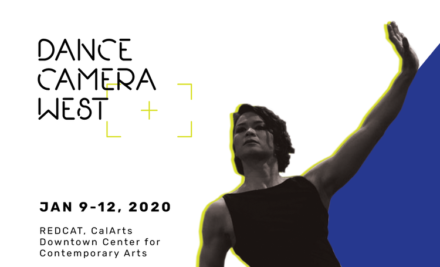
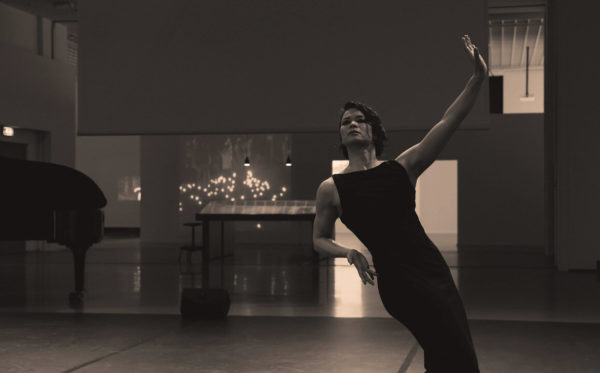
Still from a film by Edouard Lock, to be presented at this weekend’s Dance Camera West festival (Image courtesy of REDCAT)
REDCAT, CalArts’ downtown Los Angeles center for contemporary arts and Automata Arts, has announced a full schedule for its Dance Camera West Festival, which will be presented January 9-12 2020.
screeningsDCW will present four days of , featuring 55 short, experimental and documentary films selected from a record number of 325 submissions representing more than 40 countries.
According to the press release:
DCW2020 includes works from Asia, Europe and the Americas, that feature dancers young and old, tell stories and create new visions with the body as the moving image – once again exhibiting the best examples of work that expands the possibilities for movement composition by pushing the boundaries of dance beyond what is presentable on stage.
The festival features works by lauded choreographers like Edouard Lock, founder of the renowned Canadian company La La La Human Steps, renowned filmmaker Katrina McPherson of Scotland, a full evening documentation of Germany’s Sasha Waltz (Kreatur), Spain’s Sol Pico, as well as many up-and-coming dancers and filmmakers.
As part of a plan to advance the evolution of dance film, DCW2020 will pay screening fees to all selected filmmakers, and has created prizes for the top films that include distribution opportunities with leading theatrical and streaming distributors including ALL ARTS, FIRST RUN FEATURES, ICARUS FILMS, and OVID.tv.
DCW is curated by DCW’s returning Artist/Executive Director Kelly Hargraves, one of DCW’s original co-founders, and a dance-filmmaker herself. DCW created a diverse committee from across dance aesthetics, comprised of of TK NUMBER of contributors who represent a broad range of ages, genders, races, sexualities and identities who are prominent members of L.A.’s performance and film communities. There will be a distinguished panel of Jurors including David Roussève, and visiting artists Katrina McPherson from Scotland, and Edouard Lock from Canada.
Since 2000, Dance Camera West has connected diverse cultures and environments through its exploration of dance on screen, bringing hundreds of challenging and provocative films to Los Angeles from around the globe, effectively bridging the gap between the uniquely influential Los Angeles film community and the significant local dance populace.
Dance Camera West is one of only a handful of organizations that has been fortunate to partner with some of the most prominent venues and organizations throughout the Los Angeles area. Co-presenters have included the Getty Center, REDCAT at the Walt Disney Concert Hall, Directors Guild of America, the Hammer Museum, and many others.
To see the Daily Schedule for Dance Camera West 2020, click here.
Dance
All-male ‘Swan Lake’ still packs a punch
Visionary’s work is timeless, worth experiencing over and over again
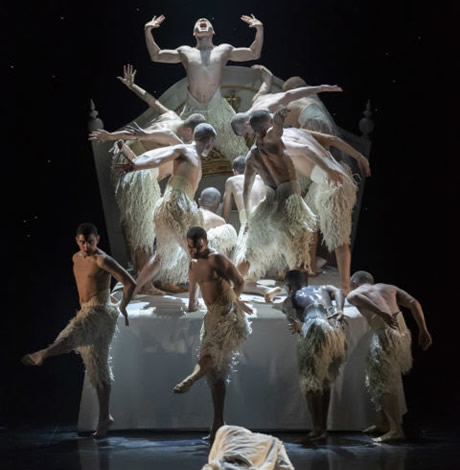
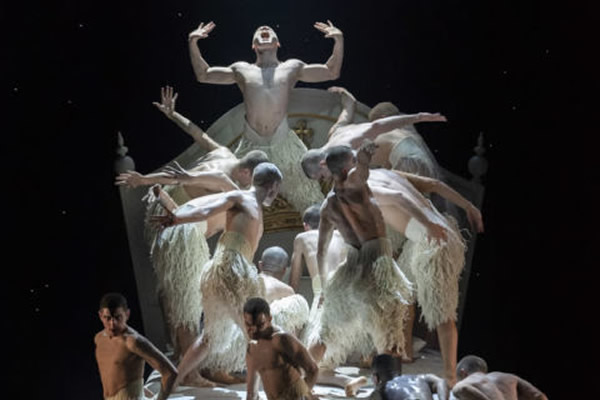
Matthew Bourne’s ‘Swan Lake’ (Image courtesy Center Theatre Group/Ahmanson Theatre. Photo credit: Craig Schwartz)
It’s been nearly a quarter century since Matthew Bourne’s bold reimagining of the classic Tchaikovsky ballet “Swan Lake” turned the dance world on its collective ear. His bold choice to recast its famous Swan Princess as a Swan Prince instead, with an attendant corps-de-ballet of male dancers replacing the traditional female ones, was near blasphemy in the deeply traditional world of ballet at the time, for no other reason than because it simply wasn’t done; more than that, of course, it meant that the doomed romance at the center of the ballet was transformed into a love story between two men – and in 1995, that was an unprecedented idea, and a controversial one, to say the least.
That controversy was at least partly responsible, no doubt, for turning Bourne’s audacious spectacle into the longest-running ballet in the history of the art form – but only partly, because the electrifying brilliance of the choreographer’s staging made it clear that this was a young upstart with more than enough talent to elevate his cheeky concept to the level of a world-class dance masterpiece. It made him arguably the most famous choreographer in the world, and he’s gone on to a career full of hits and accolades that almost any other creative artist could only dream of achieving.
The world has changed in the intervening decades, and much progress has been made in the struggle for LGBTQ visibility and acceptance – but that doesn’t mean that “Swan Lake,” remounted by Bourne (SIR Matthew Bourne, now) and now onstage at the Ahmanson Theatre, doesn’t still pack a punch.
Yes, it’s true that the power of its gender-swapped casting has mellowed somewhat – watching two impossibly beautiful, impossibly athletic, and impossibly graceful men dance together with smoldering chemistry no longer feels transgressive (thank goodness) – and that AIDS, which cast a long and overt shadow over the ballet when it debuted at the height of the epidemic, no longer seems like such an inevitable part of the subtext. Nevertheless, to see it is to be reminded that the work of a visionary artist is not only timeless, but also worth experiencing over and over again.
The new incarnation retains the iconic elements of Bourne’s original production, in which the ballet’s traditional fairy-tale story is translated into a roughly modern, decidedly English allegory about the conflict between love and duty through the story of a discontented young prince, pressured by a cold and distant mother and the apparatus of her state to find a suitable bride; he falls in love with an enchanted swan, but since the original tale’s evil sorcerer is nowhere to be found in Bourne’s version, it remains tantalizingly unclear whether the swan is a human being that has been cursed or some figment of the prince’s wishful imagination – or if the malevolent doppelgänger that invades the royal ball in the second half is an imposter sent to torment him, as in the original, or merely the dark flip side of his fantastical delusion.
The ambiguity, far from undermining the story, serves to illuminate its underlying psychological and sociological themes in a way that renders intellect irrelevant, and allows us to experience them on a purely visceral, emotional level. Upon this groundwork, the presence of a same-sex couple in the center of it all evokes an almost primal longing that will be familiar to anyone who has ever wanted something they are not “supposed” to want – but for LGBTQ audiences, it takes on an additional power, serving as an assertion against the forces of “propriety” that would deny their right to exist. Simply put, it’s the openly gay Bourne’s way of saying, “We’re here, we’re queer, get used to it.”
There’s no point in attempting to describe the visual delights of this “Swan Lake.” It’s enough to say that the gifted choreographer weaves his magic against a spectacular, huge-scale scenic design that is almost as majestic as the remarkable prowess of his dancers. The joy of Bourne’s approach – in which he blends ballet with a wide and eclectic array of other dance styles to tell his story with an almost cinematic flow of breathtaking imagery – is that he infuses his work with delicious whimsy even as he gives full weight to its drama; there are countless little moments of delight throughout, manifested through details of costume and set, cultural nods incorporated into the movement and staging, and above all through the expressiveness he cultivates in his dancers, who continually amaze us with their acting abilities even as the perfection of their physical performances takes our breath away. The cumulative effect is a sense of wonder, as we watch the players move seamlessly across the stage, our eye being led to follow the action from one heart-stopping piece of visual poetry to another.
In the end though, what is most unforgettable about Matthew Bourne’s “Swan Lake” is the thing that made it famous. His once-shocking same-sex conceit allows us to witness an incredible display of masculinity at its most heightened and idealized, transcending notions of sexuality and existing in the realm of pure expression. Nowhere is that more profoundly employed than in the ballet’s most iconic sequence, in which a posturing, aggressively masculine gang of swans wield a threatening presence that provides a stark contrast against the tenderness of the pas de deux between the two star-crossed (and species-crossed) male lovers.
In a very real way, it expresses the oppression that LGBTQ people have faced for time out of mind – but it also expresses the beauty, the purity and the absolute inevitability of love, no matter what outward form it takes.
If you’re looking for an entertainment experience to celebrate the spirit of the holiday season we are currently in, you can’t ask for a more appropriate message than that.
“Swan Lake” continues at the Ahmanson Theatre through Jan. 5.
a&e features
The ‘Trouble’ of modern dance
Veteran choreographer builds solid reputation despite obstacles
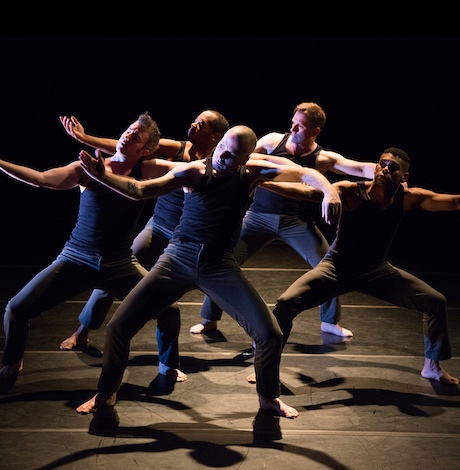
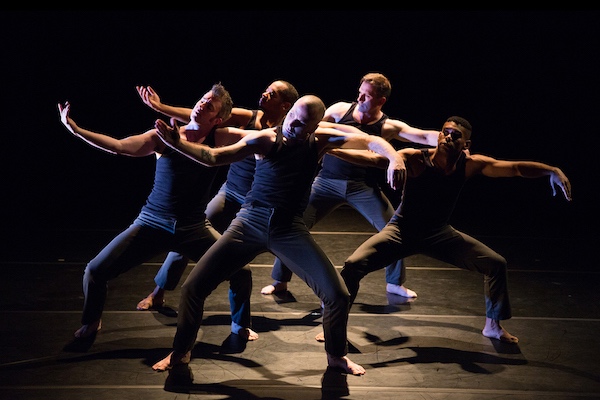
Sean Dorsey Dance performs ‘Boys in Trouble.’ (Photo by Lydia Daniller)
Some arts arenas — even those devoted to contemporary art — aren’t as progressive as you might think.
Choreographer Sean Dorsey is dismayed at the lack of trans representation in modern dance. He leads an acclaimed, five-person, multi-generational, eponymous dance ensemble that will perform his latest creation “Boys in Trouble” at Highways Performance Space in Santa Monica, May 17-18.
“Boys in Trouble” is being presented as part of Behold!, Highways annual queer arts festival designed to roughly coincide with Pride. It continues throughout the months of May and June and includes many significant highlights, including works by longtime Highways alumni such as solo theater legend Tim Miller, eminent artist/activist/playwright Michael Kearns, and Black Lives Matter Co-founder Patrisse Cullors (highwaysperformance.org).
“While other performing arts are starting to celebrate trans artistry,” he says, “modern dance continues to totally exclude trans and gender-nonconforming people. Sadly, even some of our own rainbow flag family is complicit. I can’t count the number of cis gay and queer choreographers who continue to make only hetero duets and dances. Why? Queer and trans bodies, love and creativity are gorgeous.”
Dorsey has worked hard throughout his career to create space for other trans, gender-non-conforming and queer artists in the dance community. Fresh Meat Productions, which he started 17 years ago, organizes a variety of year-round events, including education programs, community engagement, free community forums and workshops.
With Sean Dorsey Dance, he’s tried to lead the way in the charge toward inclusion. When “Boys in Trouble” had its premiere in San Francisco earlier this year, he told an interviewer he was “really proud” of “paying, commissioning, hiring and supporting over 500 artists in the Bay Area.” He called it “activism,” something he’s well-versed in after a long history of fighting for social justice causes. In between rehearsals, he has spent a fair share of his time going to coalition meetings, blocking traffic with protests and lobbying at City Hall.
That first-hand community involvement is part of what has energized him in carving out a career for himself in the face of prejudice and exclusion. It took time to build the reputation he now enjoys.
“The first thing I had to overcome was misconceptions about my work’s quality,” he says. “Presenters and funders had never seen anyone like me. Before they’d see my work, they’d dismiss me and be like, ‘Sooooo… you do drag?’”
In those early years, Dorsey and his company worked hard against the assumption that work from a transgender artist must be amateur or be experimental. He takes great pride in pointing out that after 15 years of receiving national awards, “we’ve kind of obliterated that misconception.”
Even so, he says it’s still not easy to be a trans dance artist.
“I tour constantly and I can’t even go pee in some of the airports or theaters I tour to, because of mounting anti-trans ‘bathroom bills.’ I have to navigate harassment and potential violence wherever I go.”
His latest show, co-commissioned by Highways, makes its L.A. debut as both he and the enduring queer-centric alternative art space celebrate milestones. Sean Dorsey Dance turns 15 this year; Highways marks the 30th anniversary of involvement with LGBTQ arts patrons through its prolific co-presentation of up to 250 performances and 50 new works per year.
“Boys in Trouble,” conceived by Dorsey as an urgent and timely commentary on toxic masculinity, was built upon material gathered from visits to communities across the country, where Dorsey hosted forums on masculinity, recorded interviews and taught free movement workshops for transgender, gender non-conforming, cisgender, gay, bi and queer people on the masculine spectrum. Designed to “move seamlessly between dance and live speaking for an evening of super-vulnerable storytelling,” the piece is described as “an extravaganza of full-throttle dance, raw emotion, irreverent humor, exquisite queer partnering … performed with signature precision, guts and deep humanity.”
“I developed each of my last three shows in collaboration with Highways,” Dorsey says, “and it’s significant that this beloved institution generously invested in my work as a trans artist long before most American theaters would even consider presenting trans artists.”
“In fact,” he says, “most of them still aren’t.”
Leo Garcia, executive director and former artistic director of Highways, says Dorsey first came to the organization’s attention in 2002, and they felt, “the work Sean was producing reflected the work of our transgender and queer artists.”
“Sean’s work is our work,” Garcia says. “It is truth telling. He works within the communities and tells their stories. He serves compassionate historical accuracy along with beautiful dance. And he’s irresistibly enthusiastic. He includes me in the conversation, and he collaborates well. And for me, personally, he flips gender identity on its head so my understanding of my own binary, cisgender evolution catches me short. His work helps me figure it all out.”
Dorsey says he thinks of his work as “deeply human and accessible.”
“I don’t make ‘abstract’ modern dance,” he says. “My dances are meant to be understood, and to be felt. It’s a fusion of full-throttle dancing, theater and storytelling. We get feedback constantly from our audiences that people leave the theater transformed.”
His company’s audiences are as diverse as one might expect.
“It’s beautiful seeing this diversity of communities sitting shoulder to shoulder in the theater and in the lobby after the show.”
Dorsey says being transgender affords him, “a level of self-awareness and consciousness” that “profoundly” affects his work.”
“My journey as a trans person informs my choreography, enriches it,” he says. “I consider it a tremendous blessing to be transgender.”
a&e features
‘Raise Up’ celebrates global resistance movement
Joel Phil’s defiant dance music stands against xenophobia, homophobia and Trump
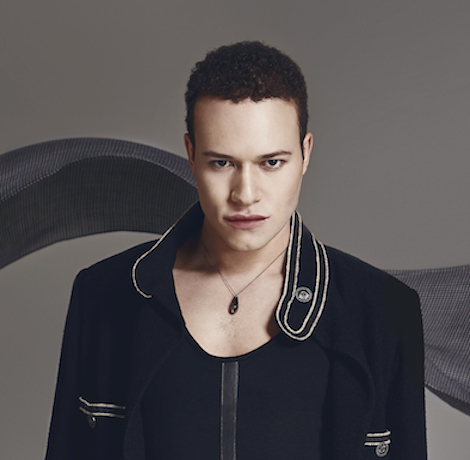
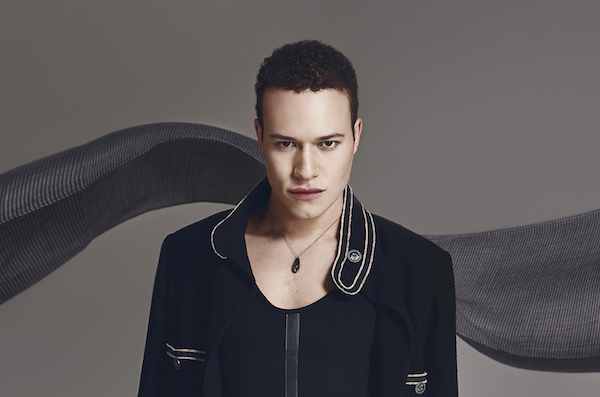
Joel Phil is emerging and trying to break into LA. (Photo courtesy Criteria Entertainment)
Where else do dreamers go, but La-La land to launch their careers?
Emerging singer, songwriter and producer, Joel Phil, is one of those aspiring many, with one single out, and a recently dropped EP, Phil is hoping to make a name for himself in English and in Spanish.
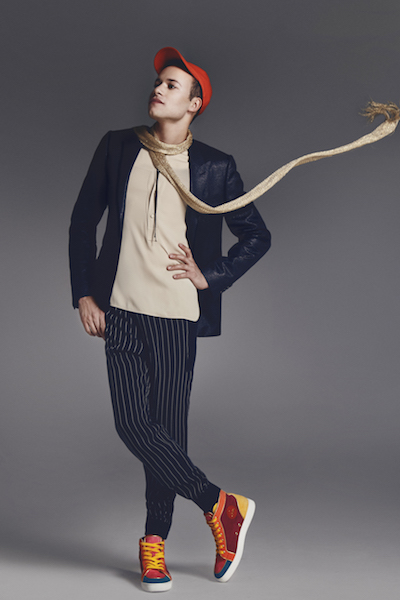
(Photo courtesy Criteria Entertainment)
With a chiseled face and a sexy smile, Phil, 27, told the Los Angeles Blade from his publicist’s office in Hollywood, his goal isn’t to make a hit; he simply wants to make music that has meaning for him.
His latest EP, “Raise Up,” is his hope for connectedness in a much-divided world.
“The song is about accepting one another, and a community coming together. When that happens it’s much stronger than when separated,”Phil says. “But, for that to be able to happen, we have to accept one another. And the first step to accepting one another is accepting yourself,” he adds.
DespitePhil’s new arrival on the music scene, “Raise Up” came together with an all-star group of music veterans. It was produced by two-time Grammy nominee Jorge Holguin aka Pyngwi and mixed by Jaycen Joshua, an academy-praised engineer who’s gotten Grammy nods for his work on hits like “Single Ladies” by Beyoncé and “Blame It” by Jamie Foxx. In his career he’s worked on over 60 #1 albums for artists like Mariah Carey, Justin Timberlake, Sean Combs, Jay-Z, Chris Brown, Miley Cyrus and more.
The song was mastered by Kevin Peterson, an engineer who worked on recent gems like Beyoncé’s ‘Lemonade’, Chance The Rapper‘s ‘Coloring Book’ and Alicia Keys‘ ‘Here’. Kevin also mastered the highly regarded recent album from Tinashe ‘Nightride’.
Shot in the historic neighborhood La Candelaria in Bogota, Colombia, Andres Sanchez — whose production company, “I See You,” has worked with such prominent Colombian artists as Bako, Juan Felipe Samper, and Cohetes, directed the video.
“It was amazing. I felt like Beyoncé,”Phil says.
Phil’s parents are immigrants to the U.S. from Spain. It’s one of the reasons he says he was inspired to the write the song.
“I was in Colombia in January of this year. Coming from a Spanish immigrant family, I didn’t want to celebrate Trump’s inauguration, and that’s where the song came from. I was glad to be out of the country. The song is a reflection of the times. The idea evolved and I thought this should be an anthem,” he says.
Phil believes that music is a vessel to send a message, but in a “sly way.”
“Look how great life could be if it was a music video all day long,” he says.
Born and raised in Brooklyn, NYC, he says shyly that his parents weren’t very supportive of his pursuing a life in music. They also haven’t been supportive of his sexuality. His look is an ambiguous gender-neutral style, but he identifies as bisexual.
“You shouldn’t put a restriction on love. You might want this person, or that person, even though society says you can only have one. We’re all bisexual at heart. Society just makes certain things taboo,” he says.
He says he’s been compared to George Michael, and that’s fine he adds… “He’s dead. I’m happy to replace him.” But the artistPhil admires and hopes to immolate (without the drugs) is the late singer, Amy Winehouse. “I love old school music from the 1960s, 1970s, and 1980s — she was the perfect mash-up of old and new. I like that, because I don’t want to be characterized in any one genre. I just want to make music,”Phil says pointedly.
Ultimately, the young singer, who got his start playing bit parts on Broadway, has more long-term aspirations than simply “making heartfelt music.”Phil says his goal, ambitious as it is, is to bring people together to make real change.
“The LGBTQ community is great symbolism; like the African American community coming together. Now, it’s the LGBTQ community coming together to help make real change. This isn’t a marketing ploy. It’s a symbolic thing. This community is the one you see come together and create real change for itself,” he says.
He is already working on new music for his next EP. This time it will be less political and more personal, he says. He has plans to go on tour… but not without his petite Pomeranian, Sam, toted along in a chic black leather bag. The two haven’t hit the big time yet, but for now,Phil is spreading the “Raise Up” message, and hoping to make big things happen in a world that could certainly use a bit of hope and a lot of unity.
Arts & Entertainment
“Matthew Bourne’s Early Adventures” is a timeless delight
Sir Matthew Bourne’s only appearance in the U.S. this year is a must see in Beverly Hills
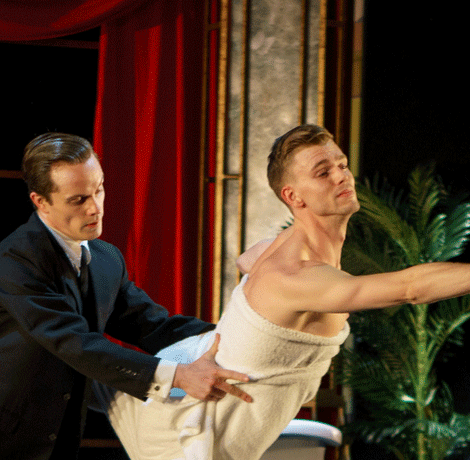
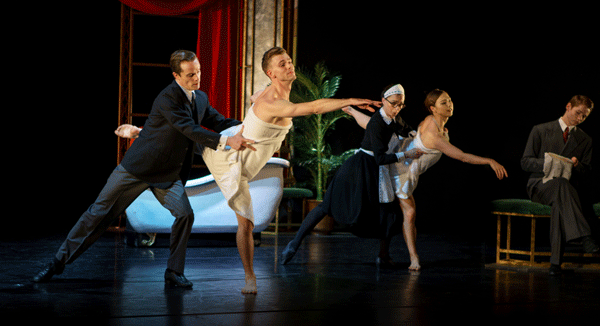
Matthew Bourne’s Early Adventures through May 21, 2017 at Wallis Annenberg Center for the Performing Arts. (Photo Courtesy Wallis Annenberg Center)
Matthew Bourne, or SIR Matthew Bourne if you prefer to be fancy, is hot.
I don’t mean that in the way that you’re thinking (although he is an attractive man, to be sure), but that he is probably the most popular choreographer working in the field of dance today – and not just in his native England, either.
For thirty years he has created some of the freshest, most energetic, and downright fun dance productions ever imagined, and in so doing he’s widened the accepted boundaries of the art form itself. He’s done it by relying on a heavy dose of influence from the film and theater he grew up watching and yoking the imagery and narrative focus from those sources to the free-form sensibilities of dance, by fearlessly infusing his work with contemporary perspectives on sex and sexuality, and- perhaps most importantly- by not taking it all too seriously.
Throughout his career so far, both with his own dance companies (originally Adventures in Motion Pictures, now New Adventures) and through his work as a director/choreographer in theater, he has continued to deliver productions that are not only graceful and athletic but clever and amusing, as cheeky and charming as they are sublime.
Now, as part of a thirtieth anniversary celebration of his company, three pieces from the beginning of Bourne’s career are gracing the stage at the Wallis Annenberg Center for the Performing Arts, allowing Los Angeles audiences to see first-hand how his unique approach to the art of dance burst forth in his work from the very first.
Those who are already dance aficionados will need no persuading to jump at the chance to see this marvelous performance, but less well-versed audiences need not fear feeling beyond their depth; Bourne’s work is nothing if not eminently accessible, thanks to his theatricality and his use of popular music and culture to anchor his productions firmly in the familiar and the contemporary.
Likewise, though all three of these “Early Adventures” are undeniably British in their sensibility, and joined by the common thread of nostalgia for a bygone era, the tropes and social observations with which they bubble are universally recognizable enough to ensure that nobody will feel left out.
First up is “Watch With Mother- Seen but not heard”, a fairly brief 1991 piece about children’s playtime. Accompanied by the incongruously refined piano music of Bach, Fauré, and Australian composer Percy Grainger, a group of precocious English schoolchildren engage in the standard pastimes, games, and horseplay of a simpler time; they also engage in the kind of cliquish childhood cruelty that seems timeless- though of course, one never doubts that such well-bred youngsters will be civil to their peers in the end.
Bourne revels in the humor of having adult dancers playing the children, which invites the obvious parallels between the immature behavior of both age brackets, and also invites the audience to recall the childish glee of being naughty (or at least not-so-nice) when noone is looking. It’s an adorable piece which perfectly sets the mood for the rest of the show.
Next comes “Town and Country- Lie back and think of England”, also from 1991. A longer segment, this one is a pastiche which explores stereotypes of English character and behavior- particularly among the so-called leisure class- through the romanticized filter of stage, film, and fiction.
Set to the quintessentially British strains of such composers as Edward Elgar and Noël Coward, it leads us through a series of vignettes depicting English life, first in the sophisticated city and then in the pastoral countryside. Fanciful and rife with sharp but good-natured satire, these are mostly funny and often hilarious exaggerations of the stiff-upper lip gentility that permeates popular notions of what it is to be British; nevertheless, amidst all the wry social commentary there is room for moments of unabashed sexuality (notably in a brilliantly staged bathing sequence) and unexpected sincerity (in a moving pas de deux between two male dancers). A wholly satisfying piece that offers a perfect glimpse at Bourne’s blend of wicked wit and tasteful sentimentality, this is the must-see highlight of the evening.
The final section is “The Infernal Galop- A French dance with English subtitles”, dating back to 1989. As can be inferred from the title, it’s a look at France through the lens of uptight English imagination, featuring all the usual clichés of French culture presented in as exaggerated and cartoonish a style as one could hope.
An eclectic mix of French music, from Piaf to Offenbach, provides the accompaniment to a parade of hilarious cultural stereotypes; highlights include a dance of seduction set to the iconic tune “La Mer” (in which the sea itself lures a trio of striped-shirted sailors to their doom), a hilariously homoerotic apache dance between two men who meet at a public urinal, and a finale which incorporates the obligatory can-can- performed with a characteristically French attitude of disdain, of course.
More saucy than shocking, this high-spirited parody provides a delicious and upbeat climax to a performance which, judging by the exuberant expressions of the dancers during the lengthy standing ovation they received at the end, is clearly as joyous an experience to perform as it is to watch.
“Matthew Bourne’s Early Adventures” is a superb introduction if you are new to the work of this groundbreaking (and much-beloved) artist, but it’s also a great way to fill in the blanks for fans who have been following him for years, but have never been able to see the early stuff that started it all.
Whichever category you fall into, don’t miss your chance to catch these rarely-seen gems; it’s their only appearance in the U.S. this year, and it only runs through this weekend. What are you waiting for? Get those tickets now!
TICKET INFORMATION:
Wallis Annenberg Center for the Performing Arts
Bram Goldsmith Theater
9390 N. Santa Monica Blvd, Beverly Hills, CA, 90210
Matthew Bourne’s Early Adventures:
May 17 – 21, 2017
Performance Schedule: Wed – Fri at 8pm; Sat at 2pm & 8pm; Sun at 2pm
Single tickets: $39 – $99 (prices subject to change)
Online – TheWallis.org
By Phone – 310.746.4000
Box Office – Wallis Annenberg Center for the Performing Arts Ticket Service
9390 N. Santa Monica Blvd, Beverly Hills, CA, 90210
-
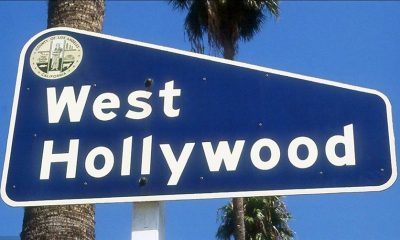
 News2 days ago
News2 days agoWest Hollywood to advance protections for diverse and non-nuclear families
-

 Commentary4 days ago
Commentary4 days agoThe Supreme Court’s ‘Don’t Read Gay’ ruling
-
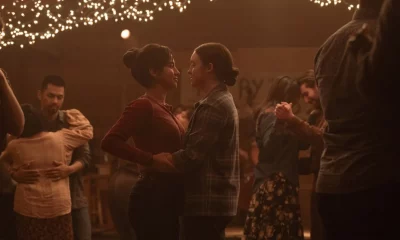
 Arts & Entertainment3 days ago
Arts & Entertainment3 days ago2025 Emmy nominations: ‘Hacks’ and ‘The Last of Us’ bring queer excellence to the table
-

 a&e features4 days ago
a&e features4 days agoThe art of controlled chaos: Patrick Bristow brings the Puppets to life
-

 Movies3 days ago
Movies3 days ago‘Superman’ is here to to save us, despite MAGA backlash
-

 Sports3 days ago
Sports3 days agoHololive and Dodgers create a home for queer fandom
-

 Events2 days ago
Events2 days agoLos Angeles Blade to take special part in NLGJA Los Angeles inaugural journalism awards
-

 Features8 hours ago
Features8 hours agoTS Madison Starter House offers a blueprint for Black, trans liberation
